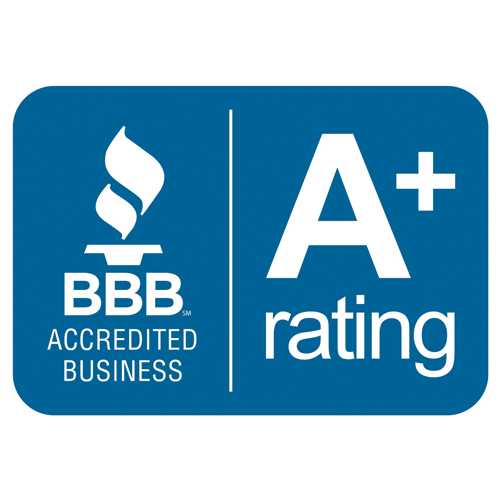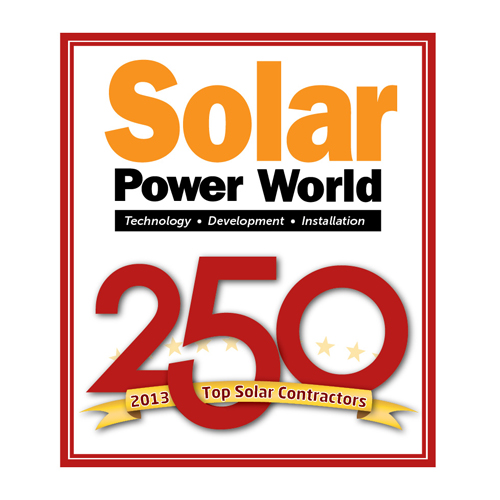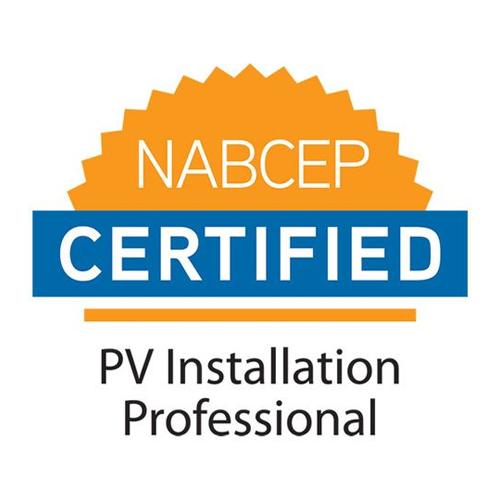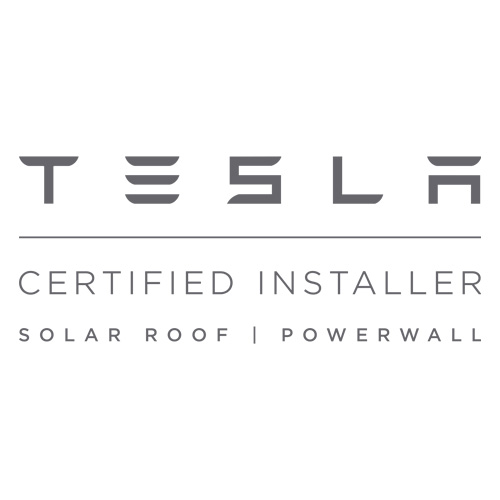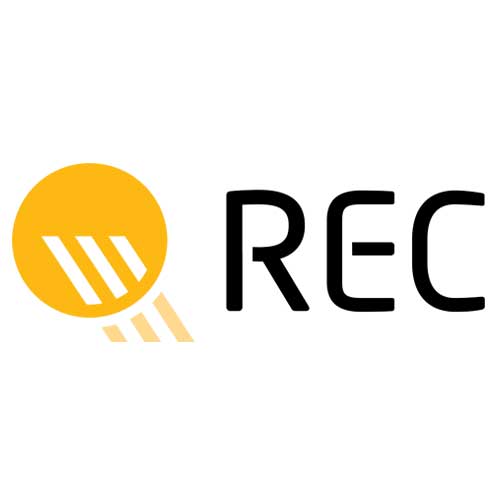What Happens If A Solar Panel Gets Struck By Lightning?
Lightning is one of nature’s most powerful forces and it can cause a great deal of damage when it strikes. A lightning strike to a solar panel will likely cause significant damage to the panel, if not outright destroy it. This article will discuss what happens when lightning strikes a solar panel, and the potential risks associated with such an event.
When a lightning strike occurs near or directly on a solar panel, the electrical surge that accompanies the strike can severely damage the photovoltaic cells within the panel. This damage may range from small streaks in the cell, which can affect its efficiency and output, all the way up to full destruction of the cell itself. Depending on how close to the panel the lightning strikes, other components of the system may also be damaged such as wiring and inverters.
The energy contained in a single bolt of lightning is immense; in fact, some experts estimate that 1 million volts of electricity are contained in just one flash! The magnitude of this energy can easily overwhelm a solar panel’s internal protection circuitry, leading to permanent damage or even complete failure. Not only that but due to their location on rooftops or other elevated positions, solar panels are at higher risk for experiencing direct strikes from lightning.
In addition to damaging or destroying photovoltaic cells, another risk associated with a lightning strike on solar panels is potential fires that could occur as well. During a typical thunderstorm, electrical currents travel through nearby objects like fencing wires or trees before they reach your home’s roof and eventually your solar panels – this process known as induction can cause arcs of current between these items and your home’s roof that can start fires if they are not adequately insulated against such events.
To mitigate against these risks posed by lighting strikes on solar panels, there are several safety measures you should take if you have a rooftop array installed at your home:
- Install lightning rods around your property; they will act as conductors for any electrical surge from nearby storms so it won’t pass through your home wiring or rooftop array
- Make sure all wiring related to your rooftop array is properly rated for outdoor usage; this includes both DC power cables as well as AC circuits
- Ensure direct grounding connection between each ground terminal located near each photovoltaic cell and its corresponding junction box
- Utilize surge protectors for all input lines into inverters/charge controllers connected with your system
- Have surge protection devices installed at major electrical entries into Your Home (generally recommended by most electricians)
- Utilize over/under voltage protection devices located at each power inverter outlet point connected with your system
1. The Panel May Not Be Covered By Insurance.
Are you worried about the possibility of a solar panel getting struck by lightning? If so, you may not be covered by your insurance. Even if your system is covered by insurance, the damage may not be covered. The panel may need to be replaced, which can be costly. Additionally, lightning strikes are rare but they can happen. If you are concerned about the possibility of a strike, you should purchase a surge protector for your system. By doing this, you can reduce the chances that your system will be damaged in any way.
What To Do If Your Solar Panel Gets Hit By Lightning
If you live in an area that is prone to lightning strikes, you know that solar panels are a key part of your energy independence. However, what happens if one of your solar panels gets struck by lightning? In most cases, the panel will suffer damage. Here are four steps that you should take in order to repair the damage and keep your solar system operational:
First, don’t panic—it’s not as bad as it seems. Solar panels usually suffer minor damage when they’re hit by lightning, and the majority of the time the system will still work. If you notice any major problems with your panel, such as smoke or flames coming from it, then contact your insurance company right away.
Second, assess the damage. Once you’ve determined that the panel isn’t going to catch on fire or explode anytime soon, take a look at the damage for yourself. This will help you to determine whether or not it’s worth repairing the panel right now. If the damage is too severe for you to fix yourself, then it’s time to call a professional installer like [xfield_company] who can do a better job than you would be able to.
Third, contact your insurance company. You may be covered for damages caused by lighting strikes, but make sure to check with your policy specifically regarding solar panel damages. Many policies include specific provisions relating to this type of coverage.
Fourth and finally, call a professional installer like [xfield_company] who can help repair the damaged panel and protect your system from future damage. They know exactly how to deal with damaged solar panels and will have everything ready and waiting when they arrive on-site. By following these simple steps, you’ll be able to get your system back up and running as quickly as possible!
2. The Warranty May Be Voided.
The risk of lightning damage to solar panels is a cause for concern among many homeowners and businesses who have invested in renewable energy systems. Unfortunately, most solar panel manufacturers offer little protection against lightning strikes, and warranty policies often include provisions that void the coverage if the system is damaged by lightning.
Lightning is an unpredictable force of nature, and it has the potential to cause serious damage to any electrical system, including those powered by solar energy. A direct strike can fry circuits, scorch wiring, and melt insulation. In addition, secondary strikes can cause further damage to other components of the system due to power surges. This can leave a homeowner or business with costly repairs or replacements as well as lost production time.
Fortunately, there are measures that property owners can take in order to protect their solar panels from lightning damage. One of these is installing lightning rods on structures where the panels are located. Lightning rods act as a path for electricity during a strike, redirecting it away from the structure and its components while also preventing arcing between wires inside the building.
In addition, property owners should consider investing in surge protection devices (SPDs) which protect solar panel systems from power surges caused by lightning strikes or other sources of electricity such as utility companies switching on or off their grid connections. SPDs absorb excess voltage before it reaches the delicate circuitry inside the system’s components. Installing these SPDs will not only protect your system but also give you peace of mind knowing that your investment is safe from damaging storms and other unexpected events that could otherwise compromise its integrity.
Finally, property owners should make sure they understand their warranties before investing in solar panels and related equipment. While some manufacturers may offer coverage for damage caused by lightning strikes despite language that states otherwise, others may not cover them at all. Make sure you read through all the fine print carefully before signing any contract or making any purchases in order to avoid surprises down the line if something goes wrong with your system after installation due to weather-related issues like lightning strikes.
3. You May Be Without Power For A While.
If you’re like most people, you probably think of solar panels as a renewable energy source that helps to reduce your carbon footprint. In fact, solar panels are actually one of the most common targets for lightning bolts. Solar panels can get hit by lightning in a number of different ways, and the effects of each strike depend on the type of strike.
Direct strikes are the safest way to damage a solar panel, and these are usually the strikes that cause minimal damage. Direct strikes are when the electricity from the bolt passes directly through the panel without being diverted. These hits typically only result in cosmetic damage, such as a broken panel or scorch marks on the surface.
Indirect strikes are when electricity from the bolt is diverted and hits another object nearby – like a tree – before reaching the solar panel. In this case, current can travel through the ground and damage your panels even if they’re struck directly by lightning. indirect strikes account for around 90% of all solar panel damage.
Finally, ground strokes occur when electricity travels along metal wires in an electrical system before reaching your solar panels. These types of Strikes usually result in more serious Damage to your panels because they can cause electric currents to flow through other connected objects (like wiring). Ground strokes happen most often during thunderstorms because they create turbulent air currents.
So what should you do if you get caught in one of these attacks? The best thing to do is contact your installer or dealer immediately so that they can assess the situation and decide what action needs to be taken (e.g., calling for help or disconnecting power). If you’re already hooked up to your system and something goes wrong, there’s not much you can do except wait it out until things calm down again (which could take hours or even days). In either case, be sure to have an emergency plan ready in case things go wrong – including ideas for how to generate power if necessary!
Tips For Preparing For A Solar Panel Strike
When it comes to solar panels, there is one thing you can never be too careful of: lightning. Solar panels are typically installed by a professional and should only be touched by those who are trained to do so. However, even if your solar panel is installed by a professional, there is always the chance that it will be damaged in some way by lightning.
Here are some tips for preparing for a solar panel strike:
- Make sure your solar panel is properly installed – A poorly installed solar panel could cause serious damage in the event of a lightning strike. Ask your installer whether or not they perform any additional testing after installing your solar panel – this may include verifying that your solar panel is properly connected to the grid and functioning properly.
- Have an emergency backup plan – If you do experience any problems with your solar system, have an emergency backup plan in place in case you need to stop using power immediately. This could include storing enough electricity on hand to last until you can get your system fixed or replaced.
- Be aware of local weather patterns – If you live in an area that experiences high levels of lightning activity, it may be wise to invest in a surge protector for your solar system as well as insurance coverage for damages caused by lightning strikes.
- Contact sensor technology – Some newer models of solar panels include built-in sensors that will automatically turn off power if they detect even a small amount of lightning nearby (this helps avoid potential damage from stray sparks). For more information on this technology, please consult the National Lightning Safety Institute website at www.nlsi.org/.
4. It’s A Good Idea To Have A Backup Plan.
If you live in an area that is prone to severe weather, it’s a good idea to have a backup plan in place. Not only will this give you peace of mind during times of crisis, but it can also protect your solar panels. Solar panels are typically designed to withstand a lot of damage, but if something does happen and your solar panel is struck by lightning, it will automatically disconnect from the electrical grid. This means that your home will no longer be getting power – which can potentially be dangerous.
To avoid this situation altogether, it’s a good idea to have a backup plan in place. This might include having enough batteries or generator set up to power your home during an extended power outage. In addition, solar panels are typically warranted for 25 years – meaning that even if something does happen and your solar panel is damaged, you likely won’t have to pay for repairs or replacements for quite some time. So whether you’re worried about severe weather or just want to make sure you’re getting the most out of your solar system, having a backup plan is always a good idea!
What To Do If Your Solar Panels Get Struck By Lightning
Whenever there is a storm in the area, it’s important to be aware of the dangers that come with it. One of these dangers is lightning, which can strike any object in the sky. If your solar panels get struck by lightning, there are a few things that you need to know.
Solar panels are designed to withstand a certain amount of damage. However, if your panel is hit hard enough, it may not be able to function anymore. In this case, you’ll need to assess the damage and decide what course of action to take.
If the damage is minimal – for example, if only one wire was damaged – you may be able to repair it yourself. You’ll need some basic tools and a knowledge of electricity and solar panels. If the damage is more serious – for example, if part of the panel was ripped off – you will likely need to replace the entire panel. You will also likely need to hire an electrician in order to do this, as electrical wiring can be complicated and difficult for most people to work with.
If you have insurance coverage for your solar panels, then your policy may cover the cost of repairs or replacement. It’s important that you keep all receipts related to this incident so that you can submit them along with your claim paperwork when filing insurance claims. Overall, being aware of how lightning works and taking appropriate precautions when it strikes is essential for keeping yourself and those around you safe during storms!
It’s Best To Avoid Lightning Strikes!
Just because a solar panel is getting hit by lightning doesn’t mean your system is going to crash. In fact, most systems will still work – it’s just best to take some precautions beforehand. Here are six tips that will help keep you safe from the dangers of lightning:
- Get a system that has an automatic disconnect switch. This will help to protect your equipment from being damaged or destroyed by a lightning strike.
- Ground all of your equipment. By grounding all of your equipment, you are reducing the chances of any electrical interference occurring and ruining your system.
- Use surge protectors. Even if you have an automatic disconnect switch, sometimes surges can still damage your equipment. By using surge protectors, you’ll be able to avoid any damage that may occur due to surges.
- Inspect your system regularly for damage and repairs. It’s important to check for signs of damage or repairs every so often in order to ensure that your system is working properly and preventing any potential problems down the road.
- Lightning is unpredictable and can be dangerous no matter what precautions are taken! Always be aware of where lightning is located and stay away from it if possible!
- Finally, always have a plan in case of an emergency – something like leaving instructions with friends or family members in case you can’t make it back home in time.
What To Do If A Solar Panel Gets Struck By Lightning
When it comes to solar panels, one thing you should never do is take them for granted. Even the most reliable solar panel can be struck by lightning, and if that happens there can be serious consequences. Below, we will outline five things that you should do in the event that your solar panel gets struck by lightning.
The first step is to make sure that the DC disconnect is closed. This switch prevents electricity from being sent to the panel, which will protect it from being damaged by a lightning strike. If the disconnect is not closed, call your solar retailer or installer as soon as possible.
Next, check if your home insurance policy covers damage caused by lightning to solar PV systems. Many home insurance policies include coverage for damage caused by natural disasters like hurricanes and tornadoes. If yours doesn’t cover lightning damage, consider upgrading your policy to include this coverage.
Finally, if you suspect that your solar panel has been hit by lightning, there are a few things that you should do to protect it and yourself. First, check to see if any wires are sparking or smoking – signs that a strike has occurred. If wires are smoking or sparking then replace all of them immediately with new ones – even if they’re blinking red! Second, remove any excess plastic or insulation from around the panel – this will help reduce exposure to potential shock injuries during a strike. Finally, put on safety goggles and gloves before inspecting the panel for damages – even a small spark could cause an explosion!
Bottom Line
Overall, while the chances are slim that your solar panels will get hit by lightning directly due to their height above ground level and other factors, it is still possible depending on local climate patterns and weather conditions in general so it’s important to take necessary precautions that will help reduce potential damages caused by storms with intense lightening activity present at times.

